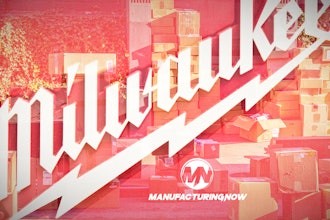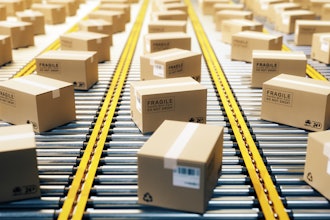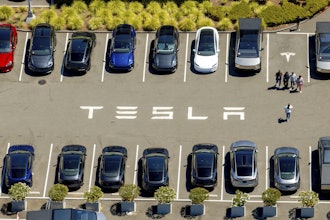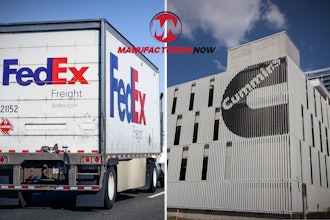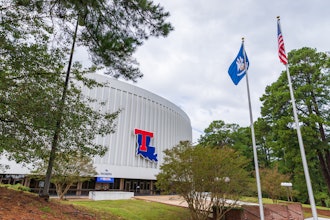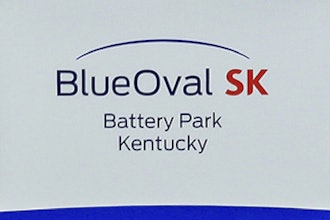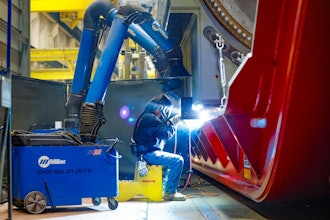Most of us are familiar with the idea of product and service parameters that vary from basic needs to customer delight. Consider how to leverage combinations of service and product, or a variety of services, to provide customers with what they expect in ways that they don’t and convert them from mere customers into loyal friends.
There are numerous lessons in both recent events and throughout history that demonstrate businesses winning long-lasting customer loyalty from customers. Let’s look at a few of those examples and learn how we too can influence our customers in positive ways and win that loyalty.
A common model, with which I suspect most of us are familiar, is to categorize product and service features or parameters into three basic groups. They are as follows:
- Basic Needs
- Performance Parameters
- Bonuses or Delighters
Basic needs are fundamental expectations of products or services. They are the unspoken expectations that customers have of our offerings. For example, if your product is a notebook computer, customers expect it to come with an integrated keyboard. Cars are expected to have steering and brakes. A tax consultant is expected to correctly evaluate our taxable income and assets and complete and submit our tax forms appropriately. Customers won’t ask for these things, but if they are missing, they will be extremely disappointed and the provider risks losing those customers.
Performance parameters are elements of our products that will drive customer decisions to purchase our offerings. The more of these elements we provide for the right price, the more likely our offerings will sell. Examples are the number of popular and recently released movies and TV shows available from an entertainment subscription service, or horsepower and fuel economy for an automobile. We can leverage performance parameters by providing more for less (the best overall value) to draw customers and increase market share.
Bonus features are elements that our customers do not expect, but are thrilled to have. They are the features that customers didn’t know they wanted or needed until we provided them. These are the parameters that typically define breakthrough innovation and distinguish our offerings from competitors. Examples are sliced bread, interest free financing, or applications for smart phones.
We should also understand that, in time, delighters become performance parameters, and performance parameters become basic needs. At one point in time, sliced bread was an inspired novelty that, along with price, drew customers away from small bakery products and toward industrial bakery breads. Now, most of us wouldn’t buy an industrial bakery’s product if it didn’t already come sliced in the bag. It’s an unspoken expectation, a basic need.
Most of us have been taught or told before. However, what is not typically said is that we the providers, not the customers, are the ones who drive the phenomenon of delighters diminishing to basic need. We deliberately offer delighters and performance parameters at lower price points in order to draw customers. We do this as competitors also start providing the same delighters and performance levels.
What’s more, it shouldn’t be an unfortunate phenomenon, but it should be our deliberate and conscious strategy. When we produce a strategy to get the most out of our combination of delighters, performance parameters, and basic needs, then we can best capitalize on the phenomenon. We can certainly influence it, and sometimes control it.
That being written, it doesn’t mean that customers, particularly those in highly competitive markets, aren’t also aware of the phenomenon and don’t plan their strategies accordingly. Let me provide a personal example that demonstrates all of the above.
I recently received a phone call from my cable company, which currently provides me with my pipeline to the Internet. They now have the capability to offer me greater Internet speed and made a promotional offer to increase my speed and also provide basic cable TV service for $5 more a month than I currently pay. After one year, that would increase to $10 a month.
I informed the sales person that I had no interest in the cable TV service because a particular set of international channels are not available from the provider, but I asked what it would cost for me to increase my Internet speed without it. The answer was an additional $10 per month, or I could obviously get it for $5 a month by accepting the promotional offer. In the end I declined both.
Now let’s examine that example. Internet access is a basic need. No business, and most households, could not function in a culturally expected way without it. Internet speed is a performance parameter. More speed is worth more cost to most consumers. Likewise, TV service is a basic need for most households. Additional access to more channels is a performance parameter for most customers and is worth extra cost.
I believe my cable company is trying to influence or control the future value of Internet access. It also seems that the competitor companies are doing the same. “For a few dollars more a month we can give you better service and performance than your current provider.” Of course, once everyone settles into basically the same performance for the same price the message will change to, “For a few dollars less than your current provider, we can offer you the same performance.” So the cutthroat competitive bloodbath continues.
Let’s look at another element of the scenario. I turned down the bundled option for cable TV service because that provider doesn’t offer what is to my family a basic need. Since it isn’t there, I’m not interested in paying anything for the service; I don’t want it at all.
Now $5 a month doesn’t seem like a lot to ask for higher Internet speed. Actually, after 12 months it is $10 a month more for that speed. Why did I turn down the offer? I told the sales person that I don’t tax my Internet speed today, so I prefer to wait until the new speed becomes the standard or someone decides to offer it at the price I currently pay. My family is on a budget so holding our ground is our best strategy.
Do you see the strategies taking place and ultimately colliding here? It seems clear to me that my cable provider is doing its best to leverage the performance parameter of higher speed to draw customers to a higher expectation of service cost and value, before that particular speed becomes a basic need.
If customers adapt to paying a higher price for Internet access now, then when the better offering becomes the standard, perhaps the industry can hold prices at the higher level rather than the lower one. I, of course, as a consumer would rather hold out in hopes that the new speed becomes the value expectation for the existing price.
So, we have an example of how businesses can and do use performance parameters and the phenomenon of diminishing value to try and control market value expectations and prices. But, that doesn’t get us to an understanding of how to go further and convert customers into loyal friends.
A common excuse is to say that the generations since the Baby Boomers are simply not brand loyal like their predecessors. The free access to information about products and services via the Internet and the consumer expectation that the questions they have should be answered by free information on the Internet has created an environment where consumers pick and choose their products and services based on the performance and features and reviews found, rather than a perception that one brand provides better quality or value than another. We choose based on individual offering “facts” than on brand assumptions or perceptions.
I am not sure that a generational resistance to brand identity is to blame. I suspect that if the same customer review and performance statistic information were available to prior generations the phenomenon would have been the same. It seems that today’s environment of rapid technological development, accelerated product development, and readily available information makes for a situation where it is more difficult for a single brand or business to dominate the market long enough to generate feelings of brand superiority.
However, brand loyalty does still happen. For example, survey your fellow coworkers and determine how many of them are “Mac” or “Apple people” and how many are “PC people.” Apple has a unique way for its products to interface with users that either turns people on, or turns them off. Either way, it’s a current example of brand perception driving brand loyalty. The phenomenon still takes place, though it may be more difficult to generate and sustain.
Before the Internet, and before consumer and trade report periodicals were readily available, consumers relied upon their own experience, as well as word-of-mouth from friends and family to make their best judgment about what products to buy. If one brand served them well the last time, and friends and family also had good experiences, then it seemed a safer bet to go to that same brand again, rather than switch. If it performed well repeatedly, then it could become traditional.
It might take a newspaper or radio report to provide some example that could drive customers to change their minds about a successful brand choice. Today, we have easy access to business and product information and customer reviews. We’ve come to expect it.
We have also learned that just because a previous product was good, we should not assume that a second product from the same company would be our best choice. Product and service suppliers have failed to satisfy or have been one-upped by competition, or competing products come from the same offshore factory, too often for that decision model to prevail.
Let me give you a short example that I think gives us some good insight into how to change customers into friends as well as breaks all of the paradigms and excuses about brand loyalty. It will show several tactics or strategies at the same time.
For generations, John Deere has been the brand name of choice for family-owned farms and communities. John Deere earned this loyalty by producing some of the most competitive offerings, or “right” offerings, and by performing some very unusual services for customers and community.
During the great depression in the U.S. farms were family owned and struggling. To stay afloat, Ford’s tractor division drastically reduced prices for its existing lines in order to meet the purchase capabilities of struggling customers. At the same time the predecessor brand name for John Deere, Waterloo Boy, went from over 5000 tractors sold to 79; ouch.
Hard times are good times for innovation. During the depression, John Deere developed a series of farm tractors that became some of its best selling and longest-selling products. In 1923, John Deere launched the Model D, which provided basic needs for customers at a reasonable price. That model sold for 30 years.
In 1925, John Deere launched the GP (General Purpose) line that possessed many of the performance parameters or delighters introduced to the market by tractor manufacturers in the prior two years, again at a reasonable price. The same strategy was preserved when John Deere improved the GP with further innovations, introduced to the market by others, in 1929 and kept the price highly competitive.
By 1930, tractor companies had diminished or consolidated to only 7 survivors, of which John Deere was one of two market dominators. In 1934 and 1935, the depression hardened so John Deere launched the Model A and the Model B. Both were “economy” tractors, the small Model B in particular focused on meeting the minimal basic needs of customers at the lowest possible price. These became the company’s most popular models ever.
In 1935, John Deere and Caterpillar, two competitors with very different strengths joined forces to cross-sell each other’s products. This sort of pact is very unusual, but it made for an opportunity for each company, in a strained economy, to focus on its strengths, exercise the best possible sales coverage for those strengths, and ensure that a dominant competitor didn’t intrude. The relationship lasted until the mid 1960’s.
In 1938, John Deere engaged industrial designer Henry Dreyfuss to specifically develop a more attractive looking appearance for the A and B models. Perhaps that was a market delighter, something no one asked for, but when they could get it for the same basic price it ensured continued John Deere sales.
We can see that by carefully managing basic needs, performance parameters, delighters, and price, John Deere was able to move from failing business to market leader during a time of economic hardship. This much we discussed above, but let’s look at how John Deere took over the market and won customer loyalty that lasted for generations.
In 1931 $1.2-million were embezzled from the People’s Savings Bank in Moline, Illinois and the bank faced closure. This bank was John Deere’s bank. John Deere wrote a check to cover the loss and the bank survived.
Needless to say, this gesture made it into many of the local and national papers and radio casts. No doubt anyone who banked at People’s Savings Bank made up their minds to buy from John Deere, right after they switched banks. Naturally, many who didn’t bank there were no less influenced by John Deere’s demonstration of willingness to help a community.
Similarly, in 1932, John Deere continued to provide group insurance to unemployed workers, lowered rent in its company housing, and created “make work” programs in order to employ personnel that weren’t needed for producing product. No company was obligated to do these things, but when a successful company leverages its capability to take care of as many of it’s employees and as much of its community as this, you had better believe that people take notice. Are you ready to buy John Deere yet?
Lastly, in 1933, even though John Deere was losing money, it decided to continue to carry debtor farmers. It might not have been the best short-term decision for the company’s health, but farmers in debt to John Deere for their tractors, and every farmer they knew, became forever loyal to John Deere. In the long term, the company earned many, many more loyal customers.
Now here’s the last detail I have to drive home the story. I utilized an Internet source to get my facts straight, but I didn’t read this story off of the Internet. I heard it first, decades ago, from my father, who grew up in farm country Ohio. Many of these facts and events may have disappeared from current customer perceptions, and John Deere may be surviving more on actual performance and value, but then again, if I heard about it, perhaps others still are too.
Wouldn’t you like to have customers telling everyone they know, particularly their children that your products and services are the ones they need to buy? We can’t all expect to rescue banks, carry debts, or otherwise help entire communities during times of economic depression. However, I don’t believe that we need to in order to win brand loyalty from our customers.
I believe that integrity and perception are the keys to loyalty. More specifically, a perception of integrity is the key, not just a perception portrayed, but a perception earned. Loyalty comes from trust. To earn someone’s trust, we must show him or her that we are his or her friends, not just a business associate.
My cable provider is not my friend. It is simply a business seeking to find more ways to get my business and I perceive it clearly. It calls me to sell me more stuff. At no time, has my cable provider called me to ask, “What do you need? Are you on a tight budget; how can we help you get what you need from us?”
When we provide better products or services, and better values, when we provide the right product or service at the right time, we can increase sales and grow our business. We gain more customers, but the relationship is purely business and our customers will hold to their strategies as fiercely as we try to drive ours.
To gain customer loyalty, we must show that we are interested in aiding our customers to fulfill their strategies. There is a big difference between the perception of “let me find a solution that you are willing to buy,” and “let me find a solution that is right for you,” though the methodology of determining each and developing the solutions might be the same. This is the niche advantage of custom-solution providers over large production offerings.
Gestures of loyalty to our customers might be the most powerful way show them that we are their friends, not their business associates, or worse, scavengers. Also, actions of integrity win customer interest. No one wants to do business with someone perceptively greedy. We would all prefer to do business with someone who demonstrates genuine concern, compassion, and integrity.
My insurance provider doesn’t advertise the practice or turn its behavior into a selling point (a promoted perception), but when it pays out fewer claims than it projected, it sends its clients a notification of the fact and a refund check for a share of the extra revenues collected. They produce an earned perception of integrity by doing so.
In addition, it is one of the few financial institutions that neither asked for, nor received, nor needed a helping hand in the recent rash of government bailouts. This too produces a perception of integrity. Add this to a long history of excellent performance and I will carry on the family tradition of recommending my insurance provider to my friends, family, and my children.
Other ways to show that you are considerate or compassionate to your customers’ needs is to assemble basic needs, performance parameters, and delighters into solutions that fit your customers’ needs very specifically. If you can offer customized solutions, this is a great way to win customers. If you can’t offer custom solutions, you can still out-do your competition by being more sensitive or responsive to market movements.
For example, times of economic strain are not the right times to introduce more performance for more money (refer to my cable company example above). It is however a good time to offer less for less (as John Deere did with the Model B) or to offer the same for less, or more for less. Actually, any time is a good time to offer more for less. There is never a good time to offer less for the same or less for more, if you goal is customer loyalty. Netflix demonstrated that for us all very recently.
Sometimes, it is necessary to increase prices because costs increase. Customers generally understand this. As much as it can be tempting to reset market expectations of value when margins shrink, offering lower performance for more money is no way to win customer loyalty. It is, instead, a good way to lose it.
To sum up, it is still possible to generate brand loyalty, businesses have just forgotten how. Look for, or create, opportunities to demonstrate that you are genuinely interested in solving the customers’ problems or in helping customers. It must be a genuine and credible gesture of compassion, not just a promotion or advertisement of some plan. The latter is perceived as simply another service.
It’s not enough any more to provide excellent products or services, but doing so is still part of the formula for creating brand loyalty. Once we have demonstrated that our customers’ concerns are our primary interest, we must back up our position with excellent performance. After all, it may be ideal for customers to say, “Hey, we should all buy from this business because they have integrity,” but if the offerings aren’t the right offerings or aren’t good offerings, then no one will buy them.
Leverage an understanding of how to use basic needs, performance parameters, and delighters to provide excellent and appropriate products at the right time and for the right markets. Send your growth and sales over the top and generate brand loyalty by taking actions that interest your customers more than they appear to interest your business.
Compassion and loyalty shown to customers, combined with excellent service and product performance are the keys to generating a perception of integrity among customers. Customers will remain loyal to businesses of integrity that act more like friends instead of like greedy businesses. Loyal customers will grow your business and ensure future business by acting in turn like your friends, not just your customers.
Stay wise, friends.
Sources: John Deere, Company Chronology 1920-1939, www.deere.com/en_ZA/about_us/compinfo/timeline_1920.html
If you like what you just read, see more of Alan’s thoughts at www.bizwizwithin.com





